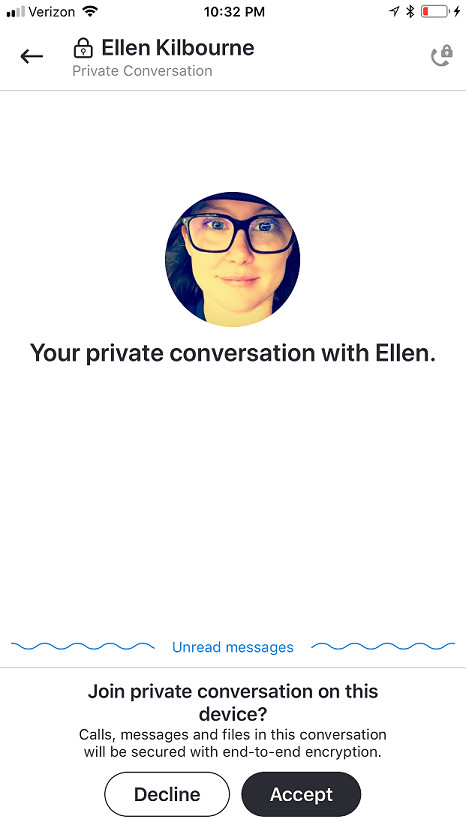Microsoft has announced that it will be previewing end-to-end encrypted conversations for Skype Insiders. Dubbed "Private Conversations", this feature will enable Insiders to keep shared information private via end-to-end encryption. This has been made possible by the use of the Signal Protocol by Open Whisper Systems. However, no information regarding a wider release has been made available as of yet.
It is important to note that no chat content from these conversations will be displayed in the chat list, or with other notifications - in order to keep any shared information private. End-to-end encryption will be provided for text messages, audio calls, as well as several types of files. Currently these conversations are limited to two people at a time. However, Microsoft aims to improve the user experience by allowing multiple people to join such conversations in the future.

Microsoft has detailed the method of access and usage of this feature for Skype users in the following way:
Give it a try by selecting “New Private Conversation” from the compose menu or from the recipient’s profile. After the recipient accepts your invite, all calls and messages in that conversation will be encrypted end-to-end until you choose to end it. You can only participate in a private conversation from a single device at a time. You can switch the conversation to any of your devices, but the messages you send and receive will be tied to the device you’re using at the time.
For the time being, Private Conversations are available for Insiders using Skype version 8.13.76.8 for iOS, Android, Linux, Mac, and Windows Desktop. Interestingly, this feature is currently unsupported on the UWP version of Skype, though Microsoft has mentioned that support for the UWP client can be expected soon.
Source: Microsoft via Windows Central

















